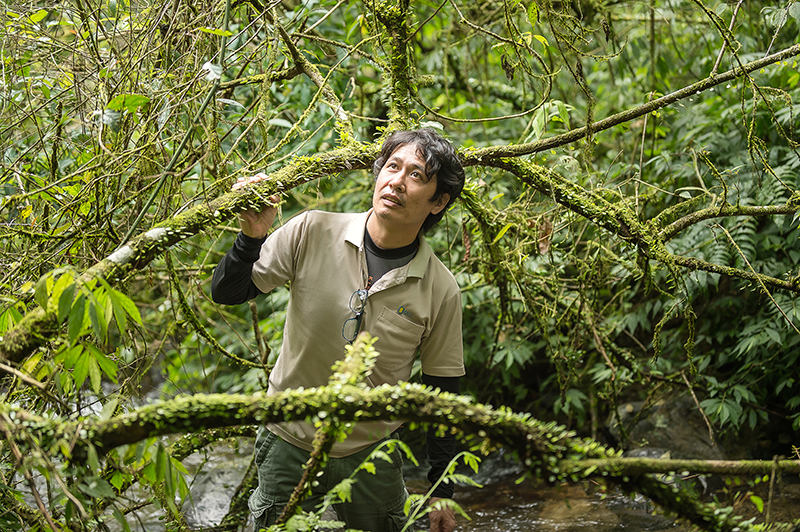
With part indigenous lineage, Hung Hsin-Chieh, the Plant Hunter, spends his days traveling the forests and mountains alone, just so that every species of flora can be recorded and not lost in time or the environment.

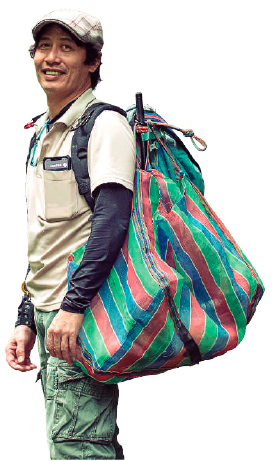
In the tropical forests of the Solomon Islands, a precious Blue Lycopodium occupies a 25-meter tree. Someone asks, “Can you make it up there?” “I can try.” As soon as Hung replies, he climbs up the tree with a quick move, leaving local Solomon islanders standing at the bottom of the tree watching him dumbfounded.
When this National Geographic program was released, the story of Hung Hsin-Chieh, the Plant Hunter, became well-known. Aged 48, Hung is currently a research assistant at the Dr. Cecilia Koo Botanic Conservation Center (KBCC for short), the largest conservation center for tropical plants in the world. Spending his entire life in the mountains and with plants, to date, he has collected over 30,000 plant species. Many rare species were conserved because of him.
Nicknamed Agai, Hung fell in love with plants at the age of 10. “I’ve been hyper-active since a child, can’t sit still for one moment!” Hung says that he has no interest in books, can’t sit still in the classroom, and instead spends his time on the wetland across from his childhood home, “I would catch mud fish and frog there, or climb up trees to look for bird nests.” Once he found drosera peltata in the wetland, an insectivorous plant covered in slime to catch insects. Out of curiosity, he caught some insects and placed them on the plant, “I saw the leaves react to the insects and found it interesting, so I brought it home to plant.” Afterwards, whenever he sees special wildflowers and grass, he would bring them home to plant and thus began his connection with plants.
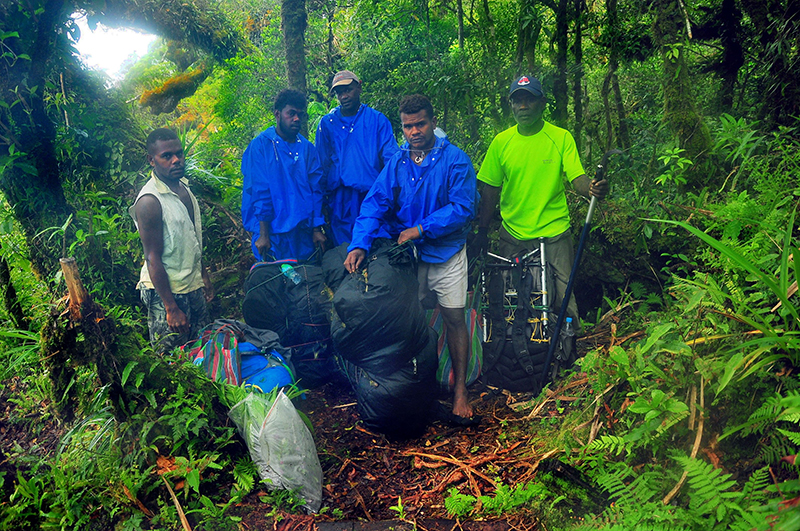
Indigenous Solomon Islander guiding Hung into the forest in the Solomon Islands.
Taking Up Part-Time Jobs Here and There
So He could Have Time Collecting Plants
Hung didn’t continue studying after graduating from middle school, not because he had no interest in books, but that he only had interest for books on plants. The more plants he collected, the more he wanted to learn about them, so he began buying plant field guides, “if the book has plant photographs and names, I will buy it.” Even though he wasn’t fluent in English, he studied hard at the Latin names of the plants. He even built a greenhouse to house the thousands of plants he collected, “there are so many species of plants, I will never get to the end of them,” says Hung.
Before joining KBCC in 2017, in order to have time to collect plants, Hung worked only part-time, never full-time, “I’ve done as many jobs as there are plants,” he laughs heartily. From construction, plumbing, historic building restoration, landscape and horticulture, and farming, you name it, he’s done it. He even worked as a porter for four years in the 4th inventory of forest resource by the Forestry Bureau of Council of Agriculture, Executive Yuan, carrying 40 kilos each time they set out and traveled throughout the mountains in Taiwan.
Naturally athletic, Hung could tell at a glance the species of the plant with his radar-sharp eyes and the vast knowledge he accumulated over the years. In 2012, KBCC partnered with International Cooperation and Development Fund and National Museum of Natural Science on the 5-year Solomon Islands Vegetation Resource Survey and Flora Compilation Project. Referred by a friend, Hung joined the project in 2015.
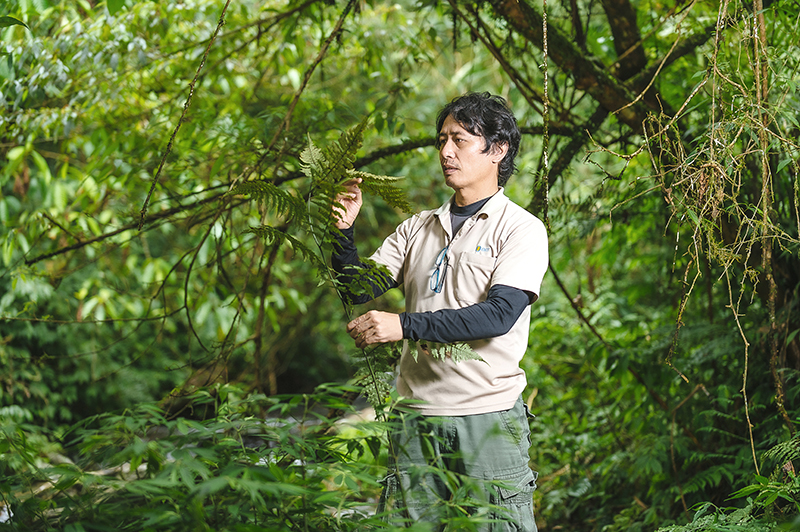
Hung has a special preference for plants, and lives a life closely connected to the natural environment.
Every Collection
is Fueled by My Own Sense of Mission
After ending his work as a porter, for a while, Hung had difficulty even walking and always wore knee braces. But the opportunity to participate in an international project doesn’t come around often, so he agreed to join despite his physical difficulty. “I’m only a middle school graduate, so deep down I always feel inferior, there was no way I’d pass up on an opportunity like this! My legs are still intact, so keep climbing I will!”
Despite the physical condition, he demonstrated outstanding skills, be it cliffs or a tree standing 8-stories high, he moved with such ease that he amazed even the local indigenous persons. From 2015 to 2017, Hung spent a total of 230 days in the Solomon Islands with very fruitful result, including the collection of Arachnis beccarii var. imthurnii, an orchid species with the longest leaf, and Phlegmariurus phlegmaria, a lycophyte with the longest leaf. They were all brought back for restoration, reproduction, or preserved as a specimen. Such feats were also documented and revealed to the public by National Geographic for the first time, wowing the world with such an amazing character from Taiwan.
After the project ended, Li Chia-Wei, CEO of KBCC urged Hung to join them. Hung hesitated for a while but later decided that it’s about time for him to settle down, and the comprehensive facility at KBCC could provide good care for the plants he collected. He said yes to the invitation, and began his first full-time job at the age of 44.
Hung may not have a high academic achievement, but the masters and doctorates working with him all called him The Master, because he could also discover plants no one else can. He says in earnest, “every plant I collected in the wild is based on my own sense of mission, I hope to salvage more rare plants.” This sense of mission drove him to risk his life over and again. Once he discovered the rare Vanda lamellata on a cliff in Orchid Island, where many people could see it but not reach it. Without hesitation, he climbed up the cliff 80 meters high, “if I slipped, I would break every bone in my body, but it was such a rare opportunity that I grasped without thinking twice,” Hung smiles in recollection.

Ballpoint pen sketch of Cypripedium formosanum by Hung.
Entering the Mountains Alone
Doing the Most Dangerous Job in Taiwan
Hung has traveled the mountains and forests in Philippines, Vietnam, Laos, and China, once spending up to 200 days in a year in the mountains. Frequenting the mountains all by himself, people describe his job as “the most dangerous job in Taiwan”. Hung explains, “you can imagine the kind of danger one will face entering the mountains, where we take not the well-managed trails but paths we cut through ourselves.”
Other than the unpredictability of the weather, there is also animal invasion. Hung has been bitten by bees and snakes, and with his natural lack of the sense of direction, he once lost his way in the central mountain range for an entire 14 days. To survive, he swallowed even leech and dung beetle, “I was dying.” Hung shares his near-death experience unaffectedly, “I lied dying on the ground and a pair of Formosan yellow-throated martens came near and considered me food. When animals dare to approach you, you know how bad it is for you.” Mustering all the strength left in him, Hung grabbed the head of the Formosan yellow-throated marten and banged it hard against the ground. It became his food instead.
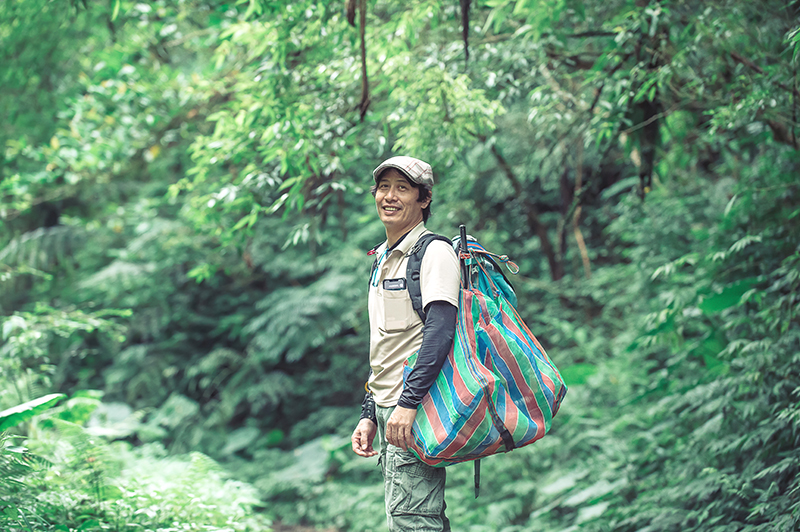
Even though unknown danger lurks every time he enters the mountains, Hung never stopped. “I am elated every time I collect a rare plant species!” He says with a sigh, “I’m from the bottom of the society, plants provide me a way to escape the reality. Every time I enter the mountains, I feel like these are the treasures I’ve collected.”
In addition to a natural talent for plant collection, Hung also excels at painting, turning the plants into his paintings. He even hopes to take part in the top three art exhibitions in the world with botanical paintings of endemic species in Taiwan. He plans to become a botanical artist should he one day be physically unable to collect anymore, and use his painting to preserve the most beautiful form of plants. “I don’t have any grand plans, I collect to my fullest and paint to my fullest, and that’s enough.” We learned of the Plant Hunter’s story from his down-to-earth and sincere storytelling, and we know that there’s more to come.
